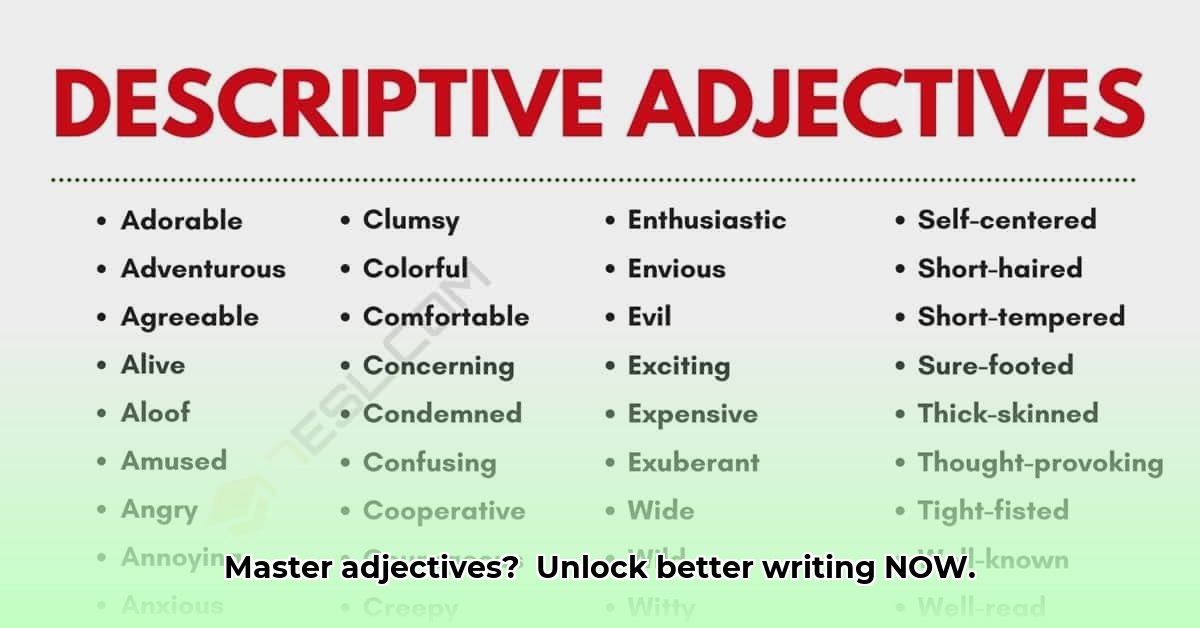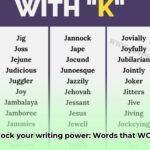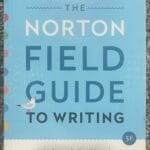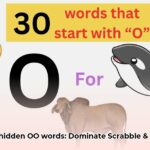Ever notice how some little words can pack a big punch? We’re diving into the often-overlooked world of adjectives that start with the letter “I”. You might be surprised by how many there are, and how much they can change the way you write and speak. This guide will show you the most common ones, explain how to use them effectively, and even show you how different cultures might view them. Whether you’re a writer, teacher, student, or simply someone who likes to use words precisely, this is for you. Get ready to discover some nifty words and learn how to use them like a pro! For more word exploration, check out this guide on adjectives starting with “T” adjectives starting with T.
Adjectives That Start With I: A Comprehensive Guide
Let’s unlock the power of words starting with “I”—a surprisingly diverse group of descriptive terms that can dramatically change the feel of your writing. We often overlook these words, but they’re secret weapons for crafting compelling sentences. Think of them as the unsung heroes of your vocabulary, offering impressive imagery and clarity. This comprehensive guide explores their nuances, cultural contexts, and practical applications.
Diving Deep into “I” Words: Nuance and Impact
These aren’t just random words; understanding their nuances can transform your writing, adding indispensable insight and sophistication. It’s about choosing the perfect word to convey exactly the right shade of meaning. You’ll discover how a single adjective can completely reshape a reader’s understanding of your description, significantly impacting interpretation. This section provides an in-depth look at various “I” adjectives, complete with example sentences and explanations of subtle differences in meaning.
Sorting Your “I” Words: A Categorical Approach
Imagine a painter’s palette—some “I” adjectives are bright and positive, others dark and negative, and many fall in the middle, describing things neutrally. This isn’t a strict system, but it’s a handy way to start thinking about these words and their potential uses. This categorical approach simplifies your word selection, making the writing process efficient.
Let’s look at some examples:
| Category | Example | Description | Real-World Example |
|---|---|---|---|
| Positive | Illustrious | Famous, highly respected | An illustrious career in medicine. |
| Positive | Immaculate | Perfectly clean, spotless | An immaculate white dress. |
| Positive | Impeccable | Flawless, perfect | Impeccable manners. |
| Positive | Inspiring | Encouraging, uplifting | An inspiring leader motivates their team. |
| Neutral | Identical | Exactly the same | Identical twins. |
| Neutral | Independent | Self-reliant, autonomous | An independent spirit. |
| Neutral | Indigenous | Native to a particular region or environment | The indigenous people of the Amazon rainforest. |
| Negative | Inane | Silly, pointless, meaningless | Inane chatter. |
| Negative | Inimical | Hostile, unfriendly | Inimical forces. |
| Negative | Ignominious | Shameful, dishonorable | An ignominious defeat. |
| Negative | Inexcusable | Unjustifiable, not able to be forgiven | The inexcusable behavior of the bully. |
See how the examples show the varied meanings and intensities? The context you use them in will also play a crucial role in shaping the overall meaning. Understanding their implications is key to effective communication.
The Power of Prefixes: Unlocking Deeper Meanings
Many “I” adjectives use prefixes like “im,” “in,” “il,” “ir,” and “ig”. These little additions often flip the meaning of the root word, creating antonyms and adding layers of complexity. For example, “possible” becomes “impossible.” This section explores the transformative power of prefixes, providing examples and explanations to enhance your understanding.
It’s like having a secret code to instantly change the tone of your writing, adding incredible impact and expanding the range of expression. Mastering these prefixes is like gaining a superpower in your vocabulary arsenal.
Culture and Context: Navigating Semantic Landscapes
Words don’t always have a single, unchanging meaning. What’s considered “immodest” in one culture might be perfectly acceptable in another. Even within the same culture, the meaning can shift depending on the situation and the individual’s perspective. Understanding cultural nuances enables sensitive and accurate communication.
It’s crucial to be aware of your audience, their backgrounds, and the context in which you’re using these words. This section offers insights into cultural considerations and provides examples of words with culturally sensitive meanings. The influence is instrumental in ensuring respectful and effective communication.
Putting It All Together: Practical Tips and Techniques
Ready to use your new knowledge? Here’s your action plan:
- Choose Wisely: Select the adjective that precisely conveys your intended meaning. Consult a thesaurus and consider all options before settling on a word.
- Think About the Feeling: Consider the emotional impact of each word on your audience. A single word can change the whole tone of a passage and evoke powerful reactions!
- Mix It Up: Avoid repeating the same adjectives over and over. Variety is the spice of life (and writing!). Use synonyms and explore different descriptive options.
- Master the Prefixes: These prefixes are your secret weapon for creating contrasts and adding layers of meaning. Experiment with them to create nuanced and compelling descriptions.
- Know Your Audience and Context: The meaning of your words changes based on who you’re talking to and where you’re using them. Tailor your language to suit your audience and the specific situation.
- Practice Regularly: The more you use “I” adjectives in your writing and speech, the more comfortable and confident you’ll become. Make a conscious effort to incorporate these words into your everyday communication.
- Seek Feedback: Ask others to review your writing and provide feedback on your word choices. This can help you identify areas for improvement and refine your descriptive skills.
- Stay Curious: Continue to explore new “I” adjectives and expand your vocabulary. The more words you know, the more expressive and effective you’ll become as a communicator.
Using “I” words effectively takes practice, but the payoff is huge. By understanding the nuances of these seemingly simple words, you’ll become a far more skillful and expressive writer, creating a more memorable experience for your readers. So go ahead—experiment, explore, and master the art of the “I” adjective!
Advanced Techniques: Mastering Negative Adjectives Starting with “I”
Let’s dive into the often-overlooked world of negative adjectives beginning with “I”. These words, while seemingly simple, possess surprising power and add depth to your descriptive arsenal. Used correctly, they can paint vivid pictures and deepen your writing, creating dynamic and nuanced narratives; misused, they can muddy your message and dilute the impact. So, how do we wield this linguistic tool effectively?
Understanding the Nuances of Negative “I” Adjectives
Many negative “I” adjectives rely on prefixes like “im,” “in,” “il,” and “ir”. These prefixes often transform a positive word into its opposite, adding specific connotations. For example, “possible” becomes “impossible,” “polite” transforms into “impolite.” Understanding this relationship is key to precisely conveying your intended meaning. The prefix doesn’t merely negate; it adds a layer of meaning and complexity.
Consider “impassioned” versus “impassive”. Both are negative in the sense they describe a lack, but they lack different things; one lacks feeling, while the other lacks passion. These subtleties matter greatly, influencing interpretation and shaping the reader’s understanding.
Categorizing Negative “I” Adjectives: A Systematic Approach
To master how to effectively use negative adjectives starting with i in creative writing, categorize them for better understanding and application, enhancing impact. Think about what aspect of a character or setting they describe. Do they relate to personality (“irritable,” “inconsiderate”)? Or perhaps physicality (“inadequate,” “ill-defined”)? Perhaps to situations (“impossible,” “inconvenient”)? Knowing these categories helps you select the most impactful words, improving integration and creating more vivid narratives.
Avoiding Overuse: The Art of Restraint and Subtlety
Overusing negative adjectives, regardless of the letter they start with, weakens your writing and diminishes the emotional impact. Too many negative words create a gloomy atmosphere and numb the reader, leading to disengagement. Think of it as seasoning; a little spice enhances, but too much overwhelms the palate. Strive for balance; contrast sharp negatives with positive descriptions and moments of levity, inducing intrigue and maintaining reader engagement.
Choosing the Right Word: Precision, Connotation, and Context
Words are not interchangeable, even if they seem similar at first glance. “Ignorant” and “uninformed,” while both negative, have different connotations and evoke distinct impressions. “Ignorant” suggests a deeper lack of knowledge, perhaps even a stubborn refusal to learn or acknowledge facts. “Uninformed,” on the other hand, simply suggests a lack of information, possibly through no fault of their own. Selecting the precise word amplifies your message, increasing impressions and creating a more nuanced
- Uncover Timeless Ancient Greece Female Names: A Guide to Choosing the Perfect Name - August 9, 2025
- Explore Ancient Greece Artifacts: Unveiling Iconic Treasures - August 9, 2025
- Unveiling Ancient Greek Marriage: Customs & Laws Revealed - August 9, 2025
















